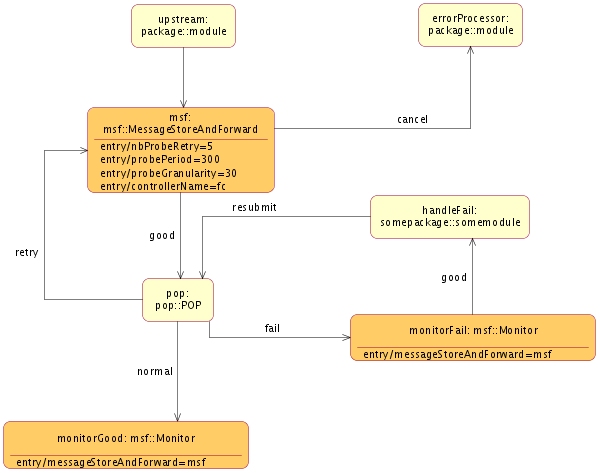Usage of the Message Store and Forward
Here are some considerations to take into account when using the MSF modules.
As shown in the figure, the msf::MessageStoreAndForward has a cancel port and requires a module to be linked to it. Service orders can go to this port for two main reasons:
-
the SO is a probe and has been played too many times (the number of times a probe is tried is configurable, refer to the component documentation),
-
the msf module received a SO that does not contain any WO in status Partial and cannot process it.
Messages that may have a Failed status can be reinjected directly into pop::POP. Orders whose status is not New or Partial will be rejected by the MSF so reinjection is done into POP. As a rule, an order that has gone out of a monitor should go back directly into POP, not into the msf::MessageStoreAndForward module.
Service Orders waiting for a Network Element to be available again can be blocked for a long time. For a discussion of how to avoid long waiting orders, refer to the component documentation for the msf package. That package's documentation includes a sample implementation of a strategy to avoid long waiting orders.

